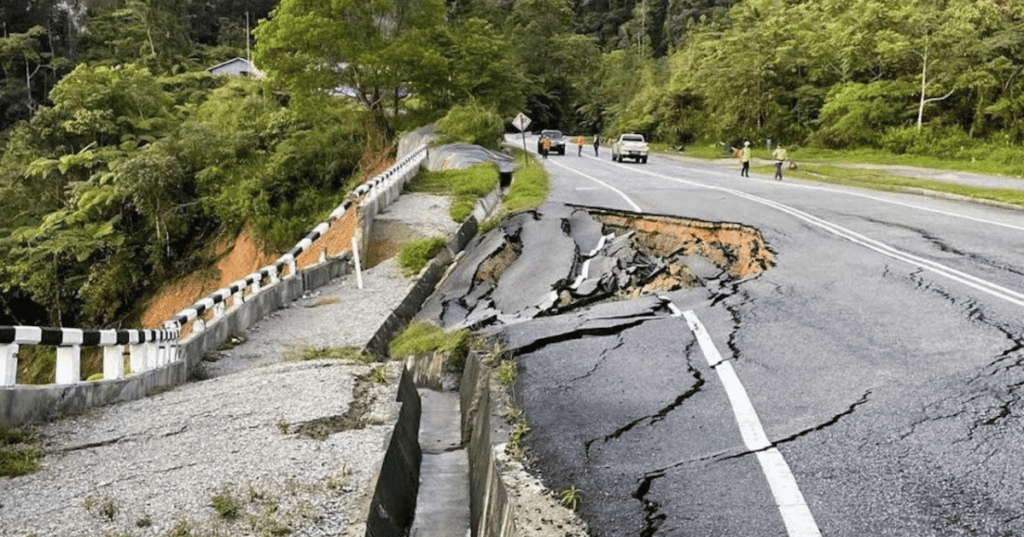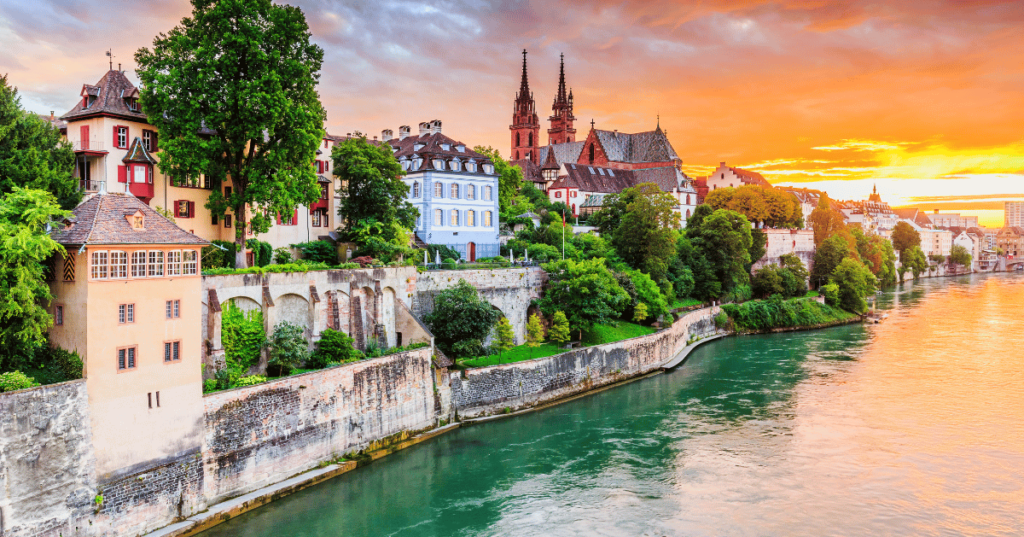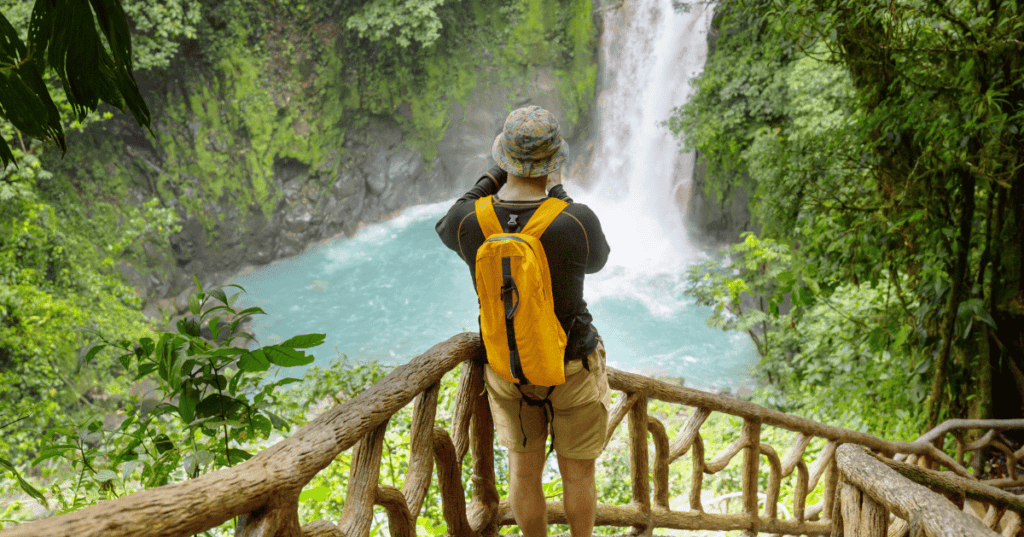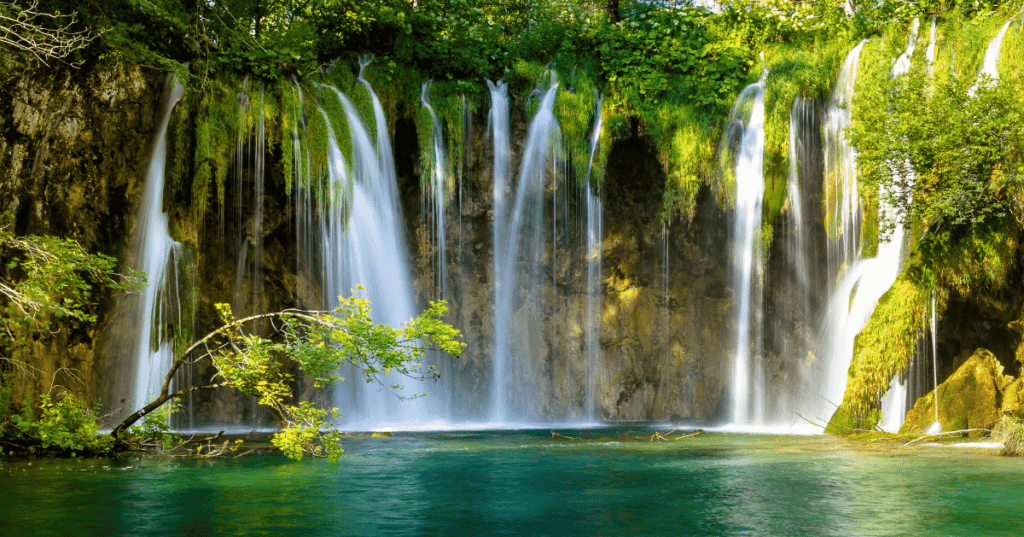The Cameron Highlands is a beautiful region located about 200 kilometers north of Kuala Lumpur, is famous for its cool climate, tea plantations, and breathtaking landscapes.
This area offers a mix of fun hiking trails, old colonial houses to explore, and plenty of tea plantations to visit. When planning a trip, it is very important to know about the road conditions to ensure a safe and stress-free journey.
Driving to the Cameron Highlands could be dangerous because of its narrow roads, winding roads, and hairpin curves. This travel post will answer all the questions related to the dangerous roads of the Cameron Highlands and help you plan, prepare, and drive safely.
Is the Road to Cameron Highlands Dangerous?
Yes, the road to Cameron Highlands is dangerous because of landslides and frequent use by heavy vehicles. Traveling via the old Tapah road can make the journey even more challenging.
Public transport in the Cameron Highlands can be unpredictable, so plan ahead and leave plenty of time for your journey. Alternatively, consider booking a private car or taxi for a hassle-free experience.

Now let’s take a detailed look at the various aspects of the road to Cameron Highlands.
Traveling to Cameron Highlands from Kuala Lumpur is about 200 kilometers away, and driving there will take about 3.5 to 4 hours. The route is lovely, but near the end, it starts to get challenging.
Beginning at the E1 highway, the journey is quick and easy until you arrive in the town of Tapah. The final sixty kilometers to Tanah Rata, the principal town in the Cameron Highlands, are traveled on a narrow mountain road that consists of many turns with lots of routes; it is slower and more difficult.
If you are not familiar with driving, sharp hairpin turns, and narrow passages, the last stretch of the journey from Tapah to the Cameron Highlands can be extremely challenging.
The roads to Cameron Highlands can get crowded, especially on weekends and holidays. Traffic jams are common, causing delays and increasing the risk of accidents.
With heavy rain and fog, visibility decreases, and roads become slippery, causing landslides. Adverse weather also increases the risk of landslides.
You should drive slowly & carefully, being aware of the potential dangers on the road to Cameron Highlands, especially on the Tapah route. Pay attention to sharp bends and steep cliffs.
Is it difficult to drive to Cameron Highlands?
It is quite difficult to drive to the Cameron Highlands. Tapah is narrow and has many sharp turns, so it could be hard to drive for those who are not used to mountain roads. There are also many steep hills to go up and down, which can be scary.
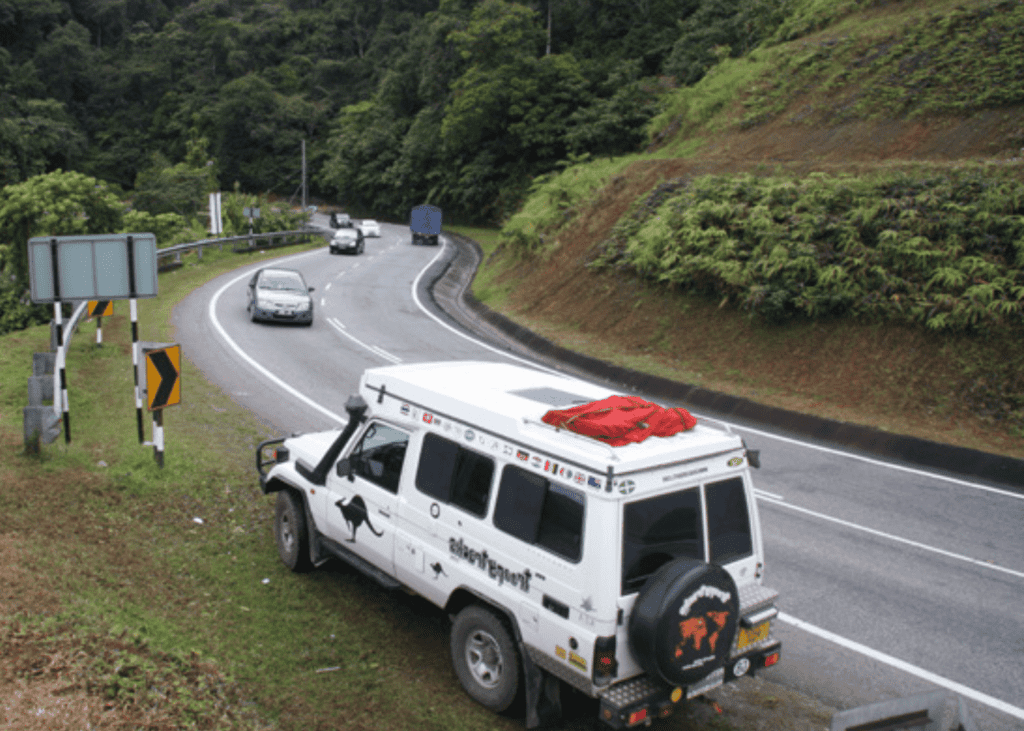
There is also a chance of landslides, particularly in the wet season. The roads can also get crowded, especially on weekends and holidays, causing delays and making the drive more tiring.
The busy road with big trucks and buses makes driving more dangerous. It often rains heavily and gets foggy, making it hard to see and making the roads slippery.
What is the biggest problem in the Cameron Highlands?
The biggest problem in the Cameron Highlands is landslides. Landslides happen when heavy rain makes the soil slip down hills. This can block roads and make driving very dangerous.

Landslides can cause accidents and delays. If a landslide happens, the roads might be closed for a long time while workers clear the debris. This can ruin travel plans and cause a lot of trouble for people.
What is the safer route to Cameron Highland?
When traveling from KL to Cameron Highlands, your quickest route by car is via Tapah, which is on Route 59, or Simpang Pulai, which is on Route 145. The fastest route is by car from the North-South Expressway, via the Tapah exit. Simpang Pulai is another alternative that takes about 4 hours.
Simpang Pulai is considered the safest and most comfortable route in the Cameron Highlands due to its balance between safety, comfort, and scenic beauty.
The most cost-effective way to get to Cameron Highlands is by bus. Buses from Terminal Bersepadu Selatan (TBS) in Kuala Lumpur to Tanah Rata, the main town of Cameron Highlands, take about 5 hours and cost between RM 30 and RM 45. Many companies like Unity Express, CS Travel, and Tours offer routine services.

There are no direct trains to the Cameron Highlands, and you can take a train from Kuala Lumpur to Kampar or Ipoh. A taxi can be hired for the remaining one-hour journey from Kampar to Cameron Highlands, which costs between RM 170 and RM 210.
There are also tour operators that offer packages from Kuala Lumpur to Cameron Highlands. We get transportation, accommodation, and a guided tour covering major attractions such as tea plantations and strawberry farms. Especially for short trips, this option is convenient.
Landslides also hurt the environment. When the soil slips, it can damage forests and harm animals’ homes. This is a big issue because the natural beauty of the Cameron Highlands is one of the reasons people visit.
Safety Tips for Traveling to the Cameron Highlands
- Be careful when driving to Cameron Highlands, especially the Tapah route, as the road is narrow and curved into sharp hairpin turns.
- There is a higher risk of landslides and rockfalls during and after heavy rain. Slipperiness and reduced visibility are also potential dangers.
- Make sure you check the weather and road conditions before traveling to the Cameron Highlands. Avoid traveling during heavy rain, and watch out for landslide warnings.
- You should plan your travel during daylight hours, when visibility is better, since fog can also reduce visibility.
- If possible, take the Simpang Pulai route, which is wider and less winding than the Tapah route.
- Try to avoid traveling during peak times, such as weekends and holidays, to minimize the risk of traffic jams and reduce stress.
- Ensure your vehicle is in good condition before starting your journey. Check the brakes, tires, and lights.
- Carry essential supplies such as food, water, a first-aid kit, and a fully charged phone.
- Have a list of emergency contacts, including local emergency services (999 in Malaysia) and your car rental company’s roadside assistance
- Know the locations of the nearest hospitals or clinics in case of medical emergencies.
Final Words on Cameron Highlands Dangerous
Traveling to the Cameron Highlands is an adventure but requires careful planning and awareness of road conditions. Whether you choose the more challenging Tapah route or the smoother Simpang Pulai route, you must be prepared, monitor the weather, and drive carefully.
The best time to take in Cameron Highlands’ natural beauty and enjoy outdoor activities is during the dry months of February through July.
By following the safety tips and being well-prepared, you can make a safe and enjoyable trip to Cameron Highlands. Enjoy everything that this lovely highland retreat has to offer, enjoy the journey, and relish the picturesque vistas.
FAQs Related to Traveling to Cameron Highlands
Is the road to Cameron Highlands dangerous?
The road to Cameron Highlands can be challenging due to steep cliffs, numerous hairpin turns, and narrow sections. It’s particularly risky during the rainy season due to landslides and rockfalls.
When is the best time to travel to the Cameron Highlands?
The best time to visit the Cameron Highlands is during the dry season, from March to September. During these months, the weather is generally more stable, reducing the risk of landslides and making driving conditions safer.
What are the different routes to the Cameron Highlands?
The two main routes to Cameron Highlands are via the Tapah exit and the Simpang Pulai exit from the North-South Expressway. The Tapah route is more winding and narrower, while the Simpang Pulai route is wider and less challenging.
What should I do in case of an emergency?
Keep the contact numbers of local emergency services handy. In Malaysia, the emergency number is 999. If you rented a car, ensure you have the rental company’s emergency contact for roadside assistance.
Are there any alternative ways to explore the Cameron Highlands without driving?
Yes, besides driving, you can explore the Cameron Highlands through guided tours, which include transportation and organized visits to major attractions. Public buses are also available, though schedules may be less reliable.

